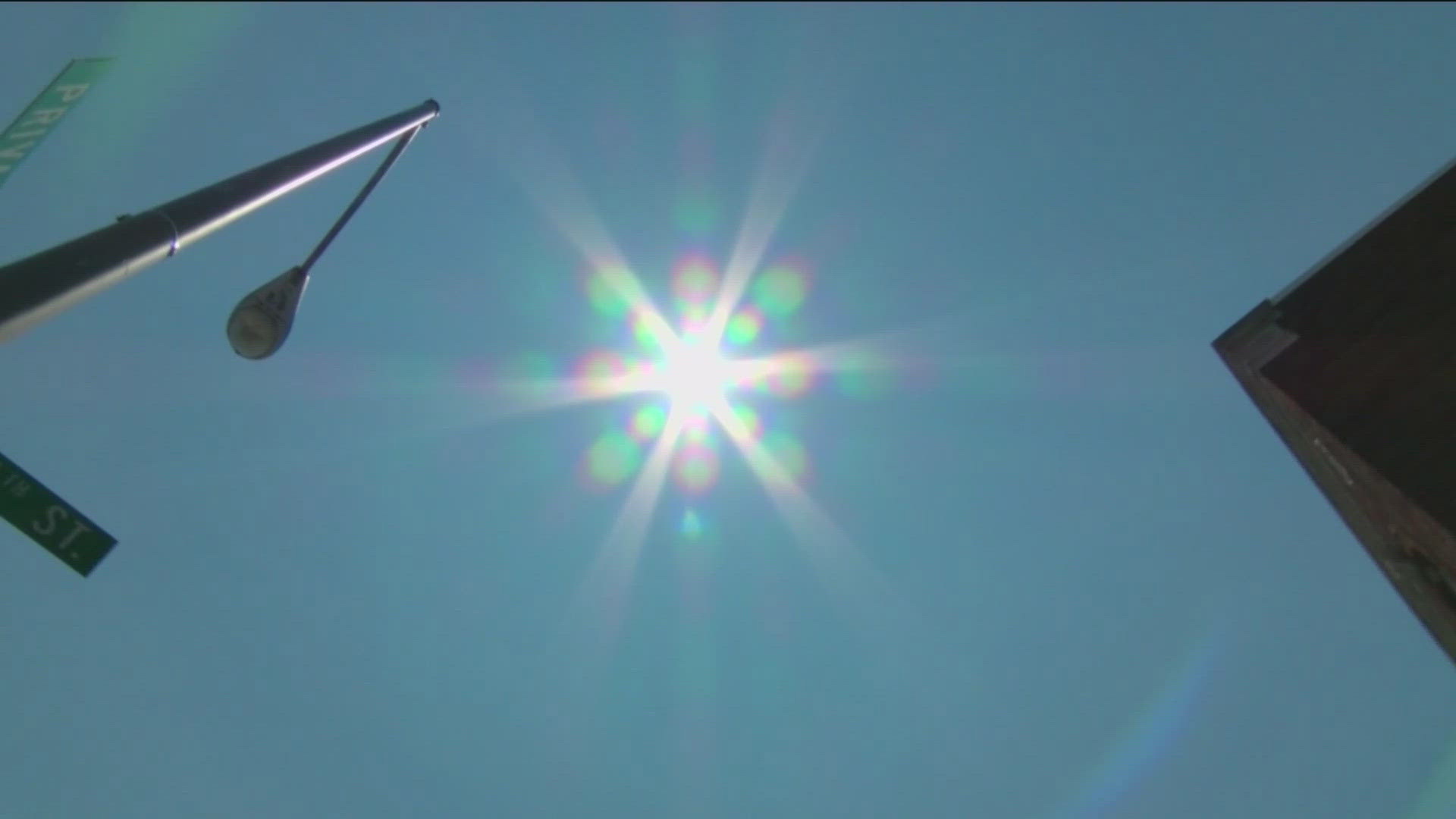TOLEDO, Ohio — The city of Toledo experienced oppressive heat on Tuesday, but some areas were hotter than others due to the effects of urban heat islands.
One of those areas was outside the Amazon Distribution Center in south Toledo, which was identified as an area of concern in a 2021 urban heat mapping study by the city with the National Oceanic and Atmospheric Administration.
Freddie Zeigler, a warning coordination meteorologist with NOAA, described what made that area stand out.
"It looks like a lot of buildings," Zeigler said. "I see solar panels, which is good, but I see a lot of buildings, a lot of surface space around it."
Zeigler said its minimal greenery and blacktop make it a strong heat-emitting location.
City of Toledo sustainability coordinator, Beatrice Miringu, also mentioned the lack of trees, compared to Swan Creek Metropark, which she said is the coolest location in the city.
"Now when you look at here, we have these beautiful trees," Miringu said. "We also have grasses all over and we have very small areas that have asphalt."
She said there is a reason behind why this is so important.
"Urban heat is one of the leading causes of death among the climate effects, as you know our climate is changing," Zeigler said.
It's an issue that she said the city is trying to address in Toledo.
"One of the things we are trying to do is use nature-based climate adaptation solutions," Miringu said.
This includes planting trees, using rain gardens and wildlife butterfly gardens.
"All these activities help to increase the amount of moisture in the area so that when you have those high heats, the heat is absorbed by the water that is in the soil and in the environment, and that takes down the heat that we experience," Miringu said.
The city of Toledo plans to plant more than 10,000 trees over the next five years.
That means spending $6 million to, in part, reduce urban heat hot spots identified in the study.
Miringu said while they do not plan to do any mapping this year, they are focusing on growing more trees.
She said there are trees that have been planted at the Amazon location, however they are still small and it will take time for people to notice a difference in temperature, as it isn't something that can happen overnight.

